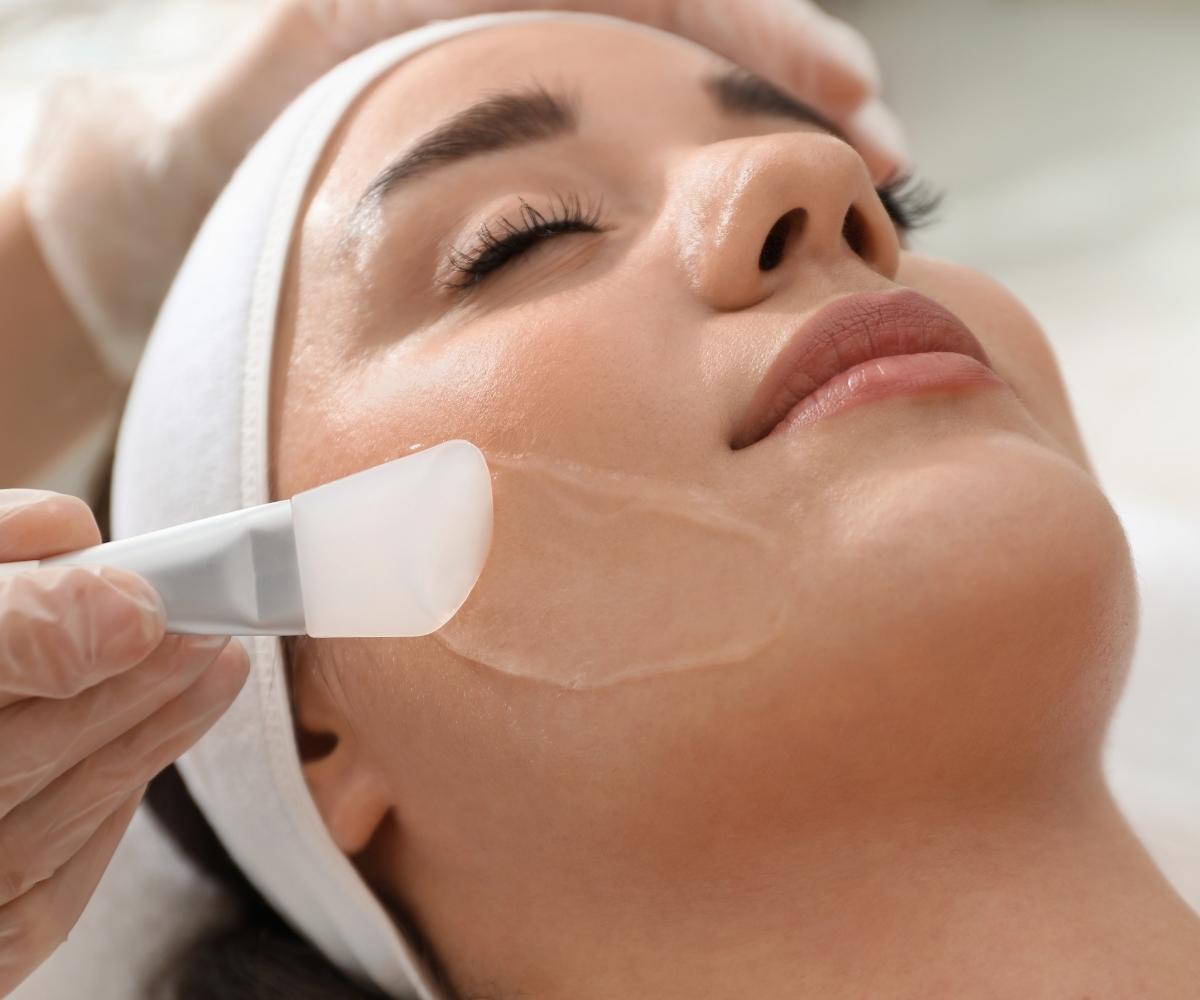Utter the words chemical peel treatment and it conjures thoughts of skin peeling off from harsh chemicals that are probably more suited to torture and punishment, rather than for the love of your skin and beauty.
But, what do we know about this misunderstood treatment that might make you perceive it differently?
Actually, quite a lot. For one thing, it has been around since the times of Ancient Egypt and Ancient Greece. And, the process has become much more streamlined and controlled to ensure that not only is it much safer and easier, but also more effective.
This article aims to demystify the facts around the infamous chemical peel, so you are well informed about the range of treatment options available to you.
While we do not encourage any specific type of treatment over others, we certainly don’t want you to make decisions based on inaccurate information or poorly conceived ideas. By the end of this article, you will see that there is not much to be afraid of, except not looking your best, perhaps.
So, let’s do some truth busting to get you informed, and you can decide for yourself what treatment plans are best for you.
What is a chemical peel?
In short, a chemical peel is when a solution is applied to the skin to remove the outer and older layer to expose the younger, fresher layer, which has less imperfections (if any).
A chemical peel encourages your skin to regenerate more smoothly with an even complexion and with a more consistent pigmentation profile.
Where did the process originate?
Did you know that exfoliating peels (another name for a chemical peel) can be traced as far back to Queen Cleopatra of Alexandria in Ancient Egypt?
She is said to have bathed in sour milk because the lactic acid had an exfoliating effect for many of the same reasons we perform them today. The ancient Greeks also used milk and honey as a skin treatment, along with citric acid from fruits and a pumice stone to help remove dead skin cells.
The Romans followed suit and the process was considered a luxury treatment and a symbol of wealth across all of these cultures. Understandably, these practices were reserved for Royalty and the nobility, but not any more.
Modern history
Exfoliating peels became more widely used to treat scarring and pigmentation issues, but also to treat wrinkles. They became popular when Johann Heinrich Jacob, a German physicist developed treatments using phenols for deeper treatments and salicylic acid or resorcinol for treating acne and milder skin imperfections.
In the early 1900s the practice of phenol chemical peels spilled through the medical community more widely (enjoy the pun) after a renowned dermatologist called Dr. George Miller MacKee used it to treat acne, wrinkles and skin pigmentation issues.
Perhaps, as a result of this, milder treatments using trichloroacetic acid (TCA) were developed and became popular because it was a gentler alternative.
By the 1970s and 1980s, chemical peels became more popular, and the field of dermatology saw an expansion in the types of peels available. Dermatologists fine-tuned formulas and concentrations to provide a range of peel depths, from superficial to deep.
Alpha-hydroxy acids (AHAs) like glycolic acid became widely used for superficial peels, thanks to their effectiveness in improving skin tone and texture without significant downtime.
Fast-forward to the modern era
Today, chemical peels are a staple in both medical and cosmetic dermatology, with advanced formulations that can be tailored to specific skin types, concerns, and desired results.
Advances in chemical peels have also made the procedure safer and more customizable. Modern chemical peels are categorised by their depth of penetration and are formulated with a range of acids (AHAs, BHAs, TCA, phenol) depending on the intended use.
When you think about it, not much has changed since Cleopatra’s time because the underlying principle and intention remains the same. In fact, the lactic acid found in Cleopatra’s sour milk bath only worked because the lactic acid is a natural form of alpha-hydroxy acid (AHA), which is still used in modern chemical peels today.
The only real difference between those treatments is that we can control the concentration and apply it more precisely. And let’s not forget that you won’t have to dip into sour milk, which probably didn’t smell very nice.
What are the benefits of chemical peels?
The benefits of an exfoliating peel are numerous and plentiful. The precise benefits really depend on why you are having them and the depth that you choose to treat, but here is a non-exhaustive list of the most popular benefits to skin health that are sought after from these treatments.
Improves Skin Texture: Reduces fine lines, wrinkles, and rough patches.
Treats Hyperpigmentation: Can reduce the appearance of dark spots, sun damage, or melasma.
Brightens Skin Tone: Evens out the complexion for a brighter appearance.
Reduces Acne and Scarring: Some peels, especially those with salicylic acid, can help with acne treatment and reduce acne scars.
Boosts Collagen Production: Stimulates skin cell turnover and collagen production for firmer skin.
The risks and side effects
As with any treatment, there are risks and side-effects, and they will vary according to each individual’s skin profile and natural sensitivity. Here is a non-exhaustive list for you to consider.
Temporary Redness and Irritation: Most patients experience redness, stinging, or swelling after the treatment, which usually subsides after a few days for superficial peels or weeks for deeper ones. To be realistic, this is the actual and intended effect and an inescapable part of the process, but naturally, it can feel unpleasantly sore.
Peeling and Flaking: The skin will peel or flake as part of the exfoliation process. More intense peeling occurs with medium and deep peels. Again, this is how your skin replaces the old with the new, so it’s an intended result with a short-term consequence.
Sun Sensitivity: The skin becomes more sensitive to UV rays, increasing the risk of sunburn if exposed without protection. This is your body’s natural response to a wound and must be taken seriously. Do not go out in the sun or use a sunbed during the healing process and you should be fine.
Scarring: In rare cases, chemical peels can cause scarring, especially in deeper peels or if not done by a professional. Scarring is always a risk when you are peeling off layers of skin, but this can easily be avoided if you test the skin first and build up to more intense treatments (if they are even necessary). That way, Sadie, our head treatment specialist, can gauge your skin profile, sensitivity and tolerance.
Hyperpigmentation or Hypopigmentation: The skin may develop dark spots (especially in darker skin tones) or lighter patches. This is more common with deeper peels, but again, this can be tested by building up to such treatments slowly over time, if they are even necessary.
Infection: As with creating any wounds, it is a rare but possible risk to invite an infection, especially with deeper peels that penetrate the skin more significantly, but good aftercare can help prevent this.
Prolonged Healing Time: Everyone heals at a different pace, but deep chemical peels require a longer recovery period, often up to a few months, and need careful aftercare. Most people don’t need a deep exfoliating peel as they are generally used to treat harsher conditions.
Who Should Avoid Chemical Peels?
As with all types of treatment, they are not for everyone. Whether they are for you will depend on your reason for having them and the condition of your skin, and wider health to begin with.
Having said that, there are definitely cases where you shouldn’t be considering a chemical peel in the immediate future. These are:
- Individuals with active infections, open wounds, or skin conditions like eczema.
- Pregnant or breastfeeding women (certain acids may not be safe).
- Those with a history of keloids (raised scars) or certain pigmentation disorders.
- People using certain medications like Accutane or retinoids, which can increase skin sensitivity.
Our Procedure
All of our treatments begin with a consultation from Sadie, our Head Treatment Specialist. Sadie will go through your medical history, examine your skin and talk you through the treatment options to see which treatments are best suited to your intended results and skin type.
Once you are both happy, the process can begin. It will look a bit like this:
Preparation
- The skin is thoroughly cleaned.
- A chemical solution is applied to the skin with a brush or gauze.
- The treated area may feel warm or sting for a few minutes.
Peeling Process
- Depending on the type of peel, skin will start peeling within a few days to a week.
- Superficial peels cause light exfoliation, while deeper peels can lead to visible peeling and crusting.
Post-Peel Care
- Skin will be red and sensitive.
- Moisturisers and sunscreens are crucial to protect healing skin.
- Avoid sun exposure as newly peeled skin is more prone to damage.
- Wait it out and watch your skin appear with a more radiant glow.
Final Thoughts
Chemical peels can be a highly effective skin treatment, but they are best done by a qualified professional to minimise risks. While you can buy home-kits for exfoliating peels, they are typically weaker than the formulas used by professional treatment therapists.
This is because manufacturers and their insurance providers won’t put their trust into the masses as they would inevitably find themselves in a losing legal battle when amateurs inevitably get things wrong.
That said, if you believe that a chemical peel is for you and you want the most effective outcome in terms of quality and cost – afterall, there is little value in saving money by buying products that don’t work, then give Opulent Aesthetics a call or visit our clinic in Caterham and Purley.
Sadie, our lead therapist will be delighted to walk you through the treatment process and answer any questions that you may have.
But, always remember. You are beautiful as you are and that will never change.








